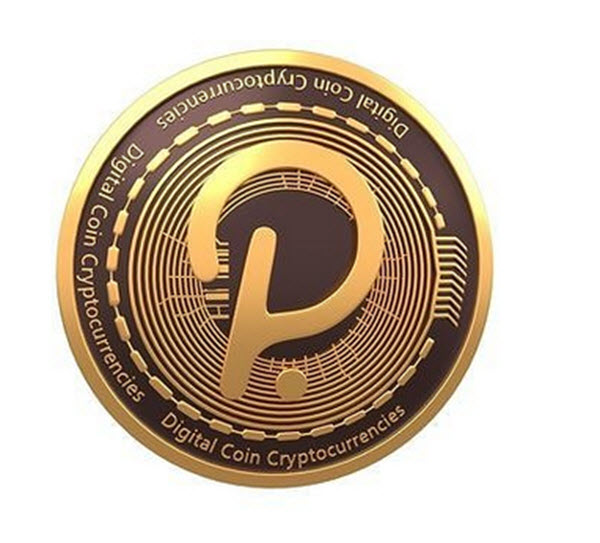Polkadot (DOT)
Contents
Polkadot is a blockchain platform and also then name of the native token (cryptocurrency) for this platform. The cryptocurrency is abbreviated DOT.
The Polkadot platform was designed to permit blockchains to exchange messages and perform transactions with each other without having to use a trusted third-party as go-between. Polkadot makes it possible to carry out cross-chain transfers of both assets and data between different blockchain. Also, decentralized applications (Dapps) can be built using the Polkadot platform.
With its multi-chain technology, Polkadot is revolutionising the cryptocurrency landscape, and it hs also received a lot of praise for being fast, secure, and have excellent scalability potential. Compared to traditional single-chain solutions, Polkadot has many advantages.
In this article, we will take a look at the Polkadot ecosystem, its unique features, growing popularity, and future potential, and also at DOT – the native token for this network.

The Polkadot Coin (DOT) – A Rising Star in the World of Cryptocurrencies




DOT, the native token of the Polkadot network, serves three key purposes: governance over the network, staking, and bonding.
- DOT holders have the privilege to vote on potential code changes, which get automatically upgraded across the network if the vote passes. This feature democratizes control over the platform, giving a voice to all DOT holders.
- For staking, users can hold their DOT tokens as a means to validate new blocks in the blockchain. The more DOT tokens you stake, the higher the chance you have of being selected as a validator.
- Lastly, bonding is a unique feature where users can tie their DOT tokens to ensure they behave honestly when adding new parachains.
Of course, the DOT is also used for transactions, for investments, and for speculative trading – just like many other cryptocurrencies.
Short facts about the Polkadot newtwork
Original author: Gavin Wood
White paper: Polkadot.network/PolkaDotPaper.pdf
Code repository: Github.com/paritytech/polkadot-sdk
Website: Polkadot.network
Timestamping schem: Proof-of-Stake
Initial release: May 26, 2020
Native token: Polkadot (DOT)
Launch of Polkadot
Ethereum co-founder Gavid Wood, Robert Habermeier, and Peter Czaban developed the protocol for Polkadot.
The whitepaper was published in 2016.
In October 2017, over 144 million USD were raised through the Initial Coin Offering. In 2019, a private sale was carried out to raise an additional 43 million USD.
The genesis block for Polkadot, and the first DOT, was release in May 2020.
Understanding Polkadot
Polkadot is a heterogeneous multi-chain interchange protocol developed by Web3 Foundation. Its central component, the Relay Chain, is responsible for the system’s security, consensus, and cross-chain interoperability. Additionally, it has multiple parachains or parallel chains, which run their own applications and use their own tokens.
What makes Polkadot distinct from many other networks is its ability to process multiple transactions on different chains in parallel, which significantly improves scalability and creates a diversified ecosystem. Moreover, it’s designed to support any type of data across any type of blockchain, making it a protocol for protocols.
Chains, bridges and threads
- The primary blockchain of the Polkadot network is the Relay Chain, and it is the governance layer of the network. This chain validates data, achieves consesus, and execute transactions.
- The numerous user-created parallel chains are called parachains, and they are auctioned, which makes it possible for users to create and operate their own blockchains using the Polkadot infrastructure.
- The Polkadot network utilizes bridges to connect blockchains and make cross-blockchain transfers of data possible. This is how Polkadot enables interoperability for other blockchain networks.
- Parathreads operate in a manner reminiscent of the parachains, but utilizes a “pay as you go” model and does not require a continuous connection to the Polkadot network.
Proof-of-Stake consesus algorithm
The Polkadot network uses a nominated Proof-of-Stake consensus mechanism.
The protocol – Blind Assignment for Blockchain Extension (BABE) – is derived from the Ouroboros protocol created by Aggelos Kiayias.
Scalability
Scalability is one of the chief challenges for traditional blockchain solutions, such as Bitcoin. With Polkadot, the developers have taken the need for scalability into account by creating an advanced multi-chain architecture. As mentioned above, the parachains makes it possible for multiple transactions to occur simultaneously. This is crucial in a world where the number of digital transactions is growing exponentially. Businesses, organizations and individuals are increasingly demanding faster transaction times, and Polkadot’s scalable platform caters to these needs effectively.
Polkadot’s Future Potential
With its multi-chain technology, Polkadot holds immense potential in the world of blockchain and cryptocurrencies. It’s designed with forward compatibility to integrate future technological advancements, making it a robust and adaptable platform.
Further, Polkadot’s interoperability feature can be a major game-changer, enabling seamless exchange of any type of data across different blockchains. This could initiate a new era of cross-chain communication and collaborations, bringing about a more connected and streamlined blockchain ecosystem.
In summary, Polkadot coin is not just another blockchain, and DOT is therefore not just another
cryptocurrency. Polkadot is a comprehensive multi-chain platform that empowers developers to create diverse applications and facilitates seamless inter-blockchain communication. Whether you’re an investor, a blockchain enthusiast, or a tech professional, understanding Polkadot can help you stay ahead of the curve in the rapidly evolving world of blockchain technology.